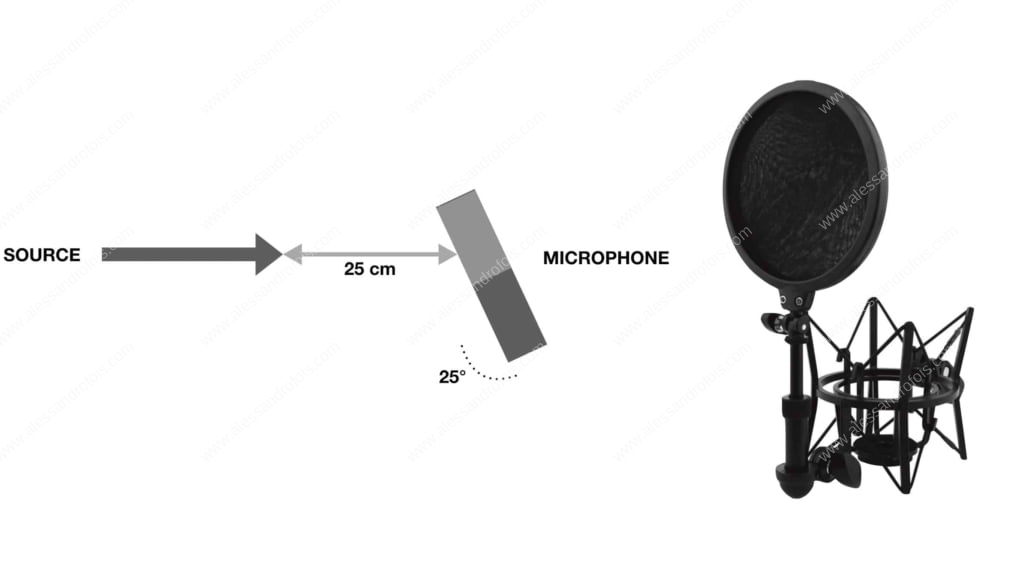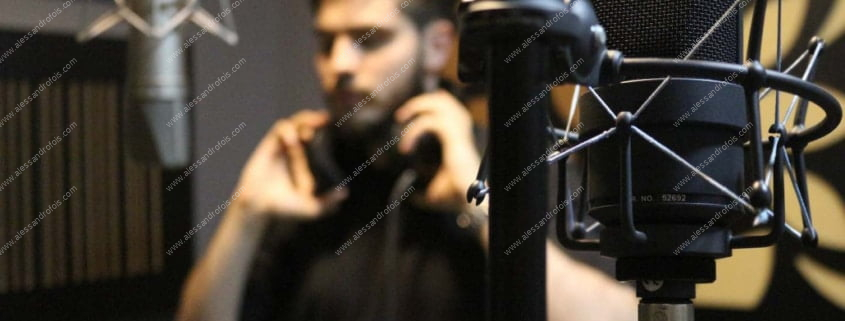Recording the Voice - Part 01 - The Set
- Author Profile
- Recent posts
Pianist, Composer, Arranger, Sound Engineer, Writer, Blogger
Alessandro Fois is a musician, composer, pianist, arranger and sound engineer. Since 2018, he has also been a writer, blogger and webmaster. He currently resides in Ivrea (Turin) where, in addition to the above activities, he manages Lycnos, studio for audio, video and web services, and the recording studio Glamour Recording Studio.
In a large professional room that has received a highly-engineered acoustic treatment, taking care to position oneself at an ideal point in the room close to the centre will result in a neutral and very subdued room-induced acoustic colouration.
Microphone distance
In a large professional room that has received a highly-engineered acoustic treatment, taking care to position oneself at an ideal point in the room close to the centre will result in a neutral and very subdued room-induced acoustic colouration.
In this case, it will also be possible to move the microphone considerably further away from the singer's mouth, up to a distance of about 60 cm, which can have some positive effects, including:
- reduction in the incidence of more aggressive consonants, which will appear more 'rounded' and natural
- total elimination of occasional air turbulence
- elimination of the proximity effect, which manifests itself by creating a progressive tonal emphasis of low frequencies
- greater incidence of resonances in the singer's head, neck and chest, giving an even more natural sound to the voice
- feeling of spatiality around the source
It goes without saying that in small studios and in the case of imperfect or insufficient acoustic correction, it will be advisable for the singer to assume a position closer to the microphone, in order to minimise the negative influence induced by ambient reflections.
Summarising, therefore, the ideal distance will be close to 50-60 cm, while the minimum distance should be 15 cm.
In most applications, especially in the home studio, a distance of 20 to 25 cm will be the best choice.
As the distance increases, the sound pressure on the microphone will decrease, forcing us to increase the gain level of the preamplifier.
This assumes that the microphone and preamplifier are sufficiently quiet, especially when dealing with sensitive voice sources (with low output volume), or relatively high ambient background noise.
For more delicate voices, the sensitivity of a microphone will also be important if you decide to increase the pick-up distance; as we shall see, a microphone that is not sensitive enough may not be able to capture the dynamic and tonal details of the voice accurately enough.
Tilting the microphone
To diminish the incidence of detonating and blowing consonants, it will often be appropriate to make the microphone assume a slant.
In this case, the capsule should be positioned at approximately nose level and pointing towards the mouth, with an inclination of approximately 20° or 30°.
This inclination is highly advisable in the case of a very close position (15-20 cm) while it gradually loses significance as it moves further away (to 30 cm and more).
Antipop and elastic support
Even the use of a anti-pop sock is particularly advisable to avoid the incidence of detonating and blowing consonants.
The anti-pop is also a safeguard for the microphone, as it protects it from moisture and the small 'spit of saliva' unintentionally emitted by the singer.
As with the tilt, the use of an anti-pop is highly advisable in the case of very close positioning (15-20 cm) while it gradually loses significance as it moves further away (30 cm and more).
Another advisable element is the elastic shock-absorbing support, which allows the microphone to be isolated to a good extent from the vibrations induced on the microphone stand and floor, which becomes more important if a high gain value is used in the preamplifier.

Example of the distance and inclination of the microphone capsule (which is the part shown in light grey), in relation to the vocal source represented by the arrowhead. On the right is a microphone stand with elastic damper, equipped with a double 'sock' anti-pop filter.






Leave a Reply
Want to join the discussion?Feel free to contribute!